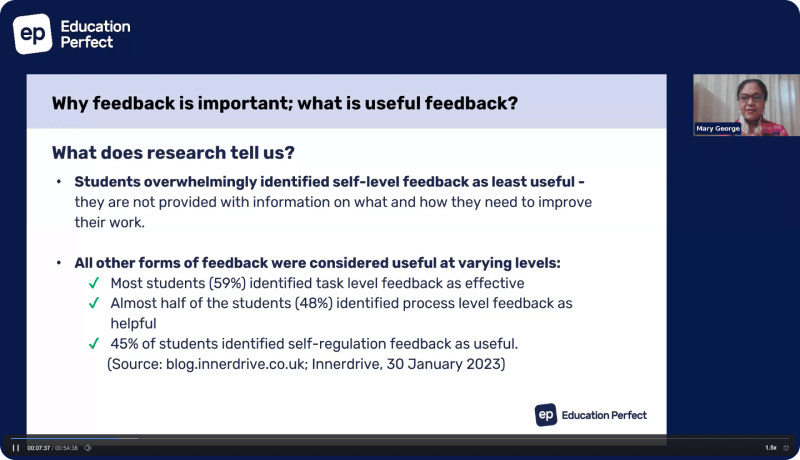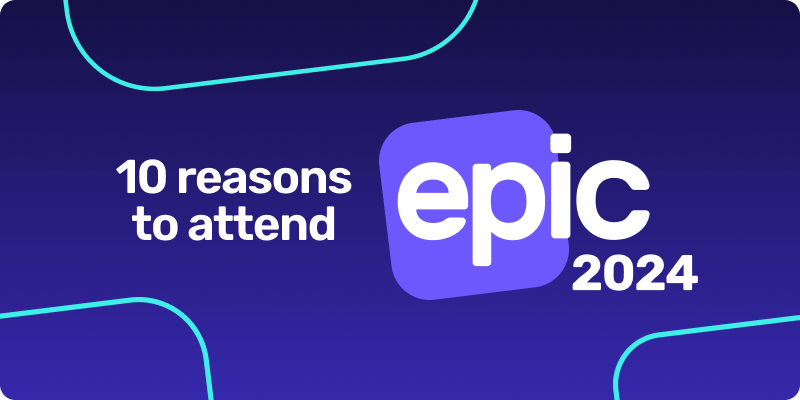How to provide the most effective feedback in the classroom.

As a young teacher I would spend hours marking my students’ work, thinking all the while that I was giving meaningful feedback, and genuinely believing that my comments were going to positively impact the motivation and learning of each young person. Time passed, I added online tools to my repertoire, and I sought to diversify and expand my methods of communicating. But, at the end of the day, I was still left wondering if the kind of feedback I was giving was actually valuable and above all, useful to my students.
Reading Cameron Ross’s article, “Feedback in the classroom”, a few weeks ago made me sit up and think about how we can give the best possible feedback in the digital age. It made me reflect on how we can make the most out of the online tools we have available? And, most importantly, how we can use them to provide useful and meaningful feedback, which will make an actual impact on student learning? I decided to invest time into finding some good strong answers, starting with a review of recent research. My aim: to come up with some practical and effective ideas for giving our students better feedback.
What is effective feedback?
In his book “Visible Learning”, John Hattie (2012) makes the following comments which help to define effective feedback:
- “To be effective, feedback needs to be clear, purposeful, meaningful and compatible with students’ prior knowledge, and to provide logical connections.”
- “If feedback is directed at the right level, it can assist students to comprehend, engage, or develop effective strategies to process the information intended to be learnt.”
- “Thus, when feedback is combined with effective instruction in classrooms, it can be very powerful in enhancing learning.”
Hattie and Timperley (2007) and Black and Wiliam (2009) provide two evidence-based models which highlight the fact that all learners need a goal, and the teacher’s feedback should relate to their progress towards achieving that goal.
What does effective feedback look like?
So what does all this mean in practical terms? Here are some useful pointers for giving effective feedback:
- Feedback should be given in a timely manner so that is is relevant to the students.
- Feedback should provide information on how and why the student has or has not met the criteria.
- Feedback should provide strategies to help students improve.
- Feedback should be sensitive to the individual needs of students. Some students need to be nudged to achieve at a higher level and others need to be handled very gently so as not to discourage learning and damage self-esteem.
Tips for facilitating effective feedback:
Here are some handy tips for facilitating the feedback process which I came across on TeachThought:
1) Use the concept of a feedback sandwich to guide your feedback: Compliment, correct, compliment.
2) Get the students to set up a notebook, or a blog, to keep track of their progress. In this notebook, whether online or on paper, students can reflect on their own progress and teachers can also add their comments.
3) Run individual conferences with the students while the rest of the class are working independently. This allows you to give the student your 1-1 attention and is a very effective and time-efficient way of providing feedback. You might also record the conferences for the students to refer back to or get them to take notes in their learning notebook or blog. Creating a class schedule for conferencing might help to facilitate the process, so each student knows when it is their turn to meet with you and are more likely to bring questions of their own to the conference.
4) Invite guest adults to give feedback. This might be the principal, another teacher or another adult in the community. This may also encourage the students to put in more effort.
5) If you plan to provide individual written feedback for your students, try to alternate the due dates for your different classes to allow you the necessary time to provide quality, written feedback.
Giving immediate “real time” feedback is one of the top pieces of advice in all the articles I’ve read on this topic! You needn’t limit feedback to written comments or 1-1 dialogue between yourself and the student, it can take a multitude of other forms: instant feedback can be given in whole class activities, it can also be given very effectively by peers. These activities for facilitating both instant and student-student feedback are some of my favourites suggested by Matt Miller on his website.
1) Play a quick formative assessment game: this could be an online game, of which there are endless possibilities such as Kahoot, or a game without technology, such as terminator, which students still love. Any kind of game that gives meaningful repetitions with instant feedback are a great option.
2) Adopt the strategy of playing a game at the start of the lesson, follow it with a mini-lesson addressing any gaps evident in the students’ answers, then play the same game/quiz at the end of the lesson or the following day. This will provide instant meaningful feedback for the students.
3) Create a google slide show where each class member is an editor and has a slide for their work. As the students are working, both you and the other students can leave comments on persons’ work, giving meaningful and real-time feedback. (Obviously before doing an activity like this, you need to ensure that students are well briefed on the kinds of things they should be commenting on and the appropriateness of comments.) Students can also complete this task on paper, with each piece then being passed around the classroom for their peers to comment on.
4) Set your class up on a social media platform. Students could take pictures of what they have done and upload them to the group and others can comment and give feedback.
5) Set up speed dating in your classroom for a particular class. Students could be in two circles, or two lines, and then have 5 minutes to chat with the person in front of them about each other’s work, giving each other feedback and then rotating to the next person. You could join in with this activity, which would ensure that each student gets teacher feedback as well as peer feedback. This works well with a timer/countdown app, so the students know when to move on.
These are just a few ideas, tips and strategies for giving effective feedback and growing great learners in your classroom. Have some fun trying them out! And do let us know your tips and ideas; with your help, we’d love to build a bank of strategies.



